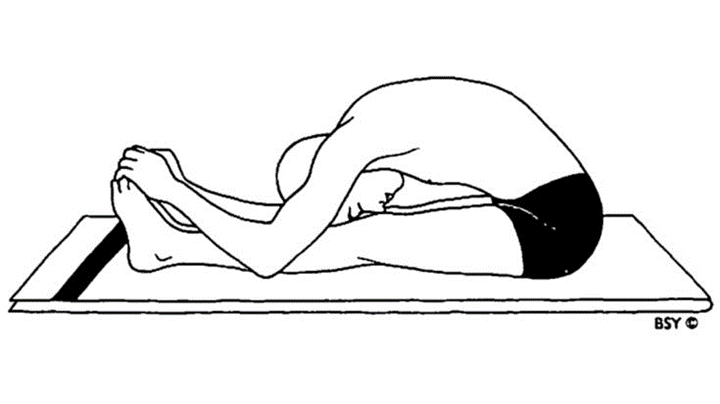Paschimottanasana (Back Stretching Pose)

Starting Position
Sit on the floor with your legs outstretched and feet together. Place your hands on your knees.
Posing
- Try to touch your forehead to your knees without straining. This is the final position.
- Hold this position for a comfortable duration.
Returning to the Starting Position
- Slowly return to the starting position.
- This completes one round.
Breathing
- Inhale in the starting position.
- Exhale slowly while bending forward.
- Inhale while holding the static position.
- Inhale while bringing your trunk further towards your legs.
- Breathe slowly and deeply in the final position, or hold your breath if holding for a short time.
- Inhale as you return to the starting position
Duration
- Beginners can perform up to 5 rounds, staying in the final position for a brief period.
- Advanced practitioners may hold the final position for up to 5 minutes.
Awareness
- Physical awareness on the abdomen, relaxation of the back and leg muscles, or focus on the slow breathing process.
- Spiritual awareness of swadhisthana chakra (sacral center).
Sequence
Paschimottanasana should precede or follow backward bending asanas like setu asana, chakrasana, bhujangasana, or matsyasana.
Contraindications
Individuals with slipped disc, sciatica, or hernia should avoid practicing paschimottanasana.
Benefits
- Stretches hamstring muscles and increases hip joint flexibility.
- Tones and massages the entire abdominal and pelvic region, including organs like the liver, pancreas, spleen, uro-genital system, kidneys, and adrenal glands.
- Aids in weight reduction in the abdominal area and enhances circulation to the spine’s nerves and muscles.
Practice Note
Paschimottanasana can also begin by inhaling and raising your arms, then exhaling into the forward bend, instead of sliding your hands down your legs.
